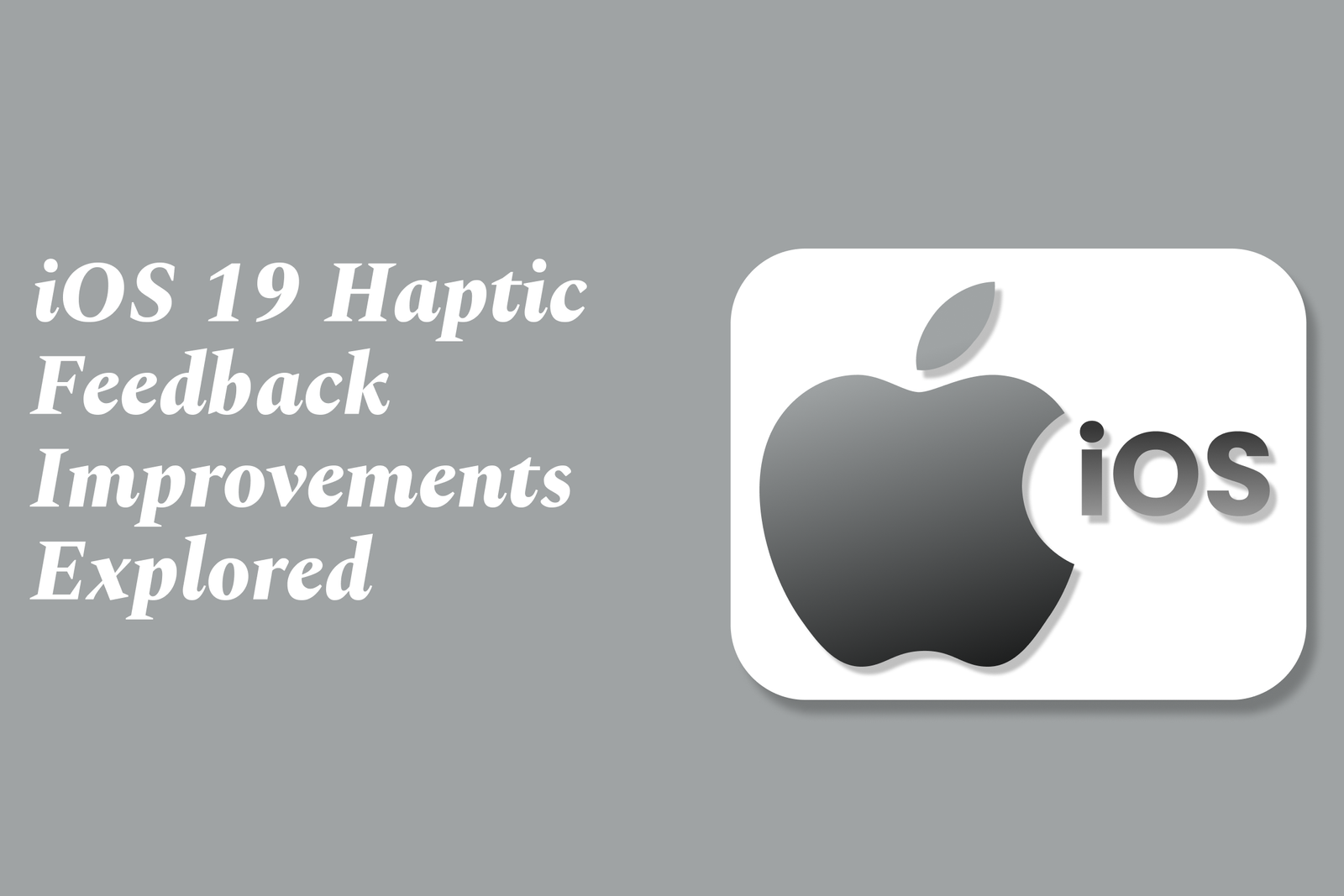iOS 19 Haptic Feedback Improvements Explored
iOS 19 enhances haptic feedback by expanding Music Haptics features, allowing users to customize vibrations for full songs or vocals with adjustable intensity. These improvements boost accessibility and create a more immersive, tactile music experience on iPhones.
iOS 19 Haptic Feedback Improvements Explored
1 ) Introduction to Music Haptics in iOS
Apple introduced Music Haptics in iOS 18, allowing users to feel music through subtle vibrations and taps while listening via Apple Music.
The feature aims to enhance accessibility, especially benefiting users who are deaf or hard of hearing by providing a tactile music experience.
2 ) Upgrades in iOS 19 for Music Haptics
iOS 19, launching in fall, will bring several enhancements to Music Haptics:
Customization options to experience haptics for an entire song or vocals only.
Ability to adjust intensity levels of taps, textures, and vibrations for a personalized feeling.
These improvements aim to create a richer and more flexible tactile experience aligned with individual preferences.
3 ) Accessibility and User Experience Impact
The ability to feel music through haptics represents a significant step forward in accessibility features on iPhone.
Music Haptics ensures that users with hearing challenges can enjoy music in a unique, immersive way, broadening the inclusivity of Apple's ecosystem.
4 ) Market and Industry Context
Haptics technology is rapidly growing, with the haptic interface market projected to rise from $2.1 billion in 2022 to $16 billion by 2032.
Apple’s continuous development in haptic feedback, such as the Taptic Engine, signifies its leadership and commitment to advancing immersive user experiences through touch feedback.
5 ) Technical and Design Implementation
Best practices for haptic feedback involve striking a balance and moderation to prevent overuse.
Integration with visual and audio cues enhances overall user engagement and immersion.
Customization options allow developers and users to tailor haptics for different apps, including music, games, and accessibility tools.
6 ) Future Trends and Innovations
Advancements will likely include improved haptic actuators, interaction with AR/VR environments, and new feedback forms like thermal sensations.
These developments will pave the way for richer cross sensory experiences.
Summary:
Apple’s iOS 19 significantly upgrades Music Haptics, enhancing customization and intensity controls to provide a more personalized tactile music experience. These improvements strengthen accessibility for users with hearing loss and reflect the growing impact of haptic technology in mobile devices and beyond. As the haptics market expands rapidly, Apple continues innovating user engagement through state of the art haptic feedback advancements.
https://justacademy.in/news-detail/android-device-manufacturer-announcements
https://justacademy.in/news-detail/the-future-of-react-native:-trends-every-dev-should-watch
https://justacademy.in/news-detail/android-user-interface-experiments
https://justacademy.in/news-detail/google-android-ecosystem-partnerships
https://justacademy.in/news-detail/react-native-and-ai-integration-for-smarter-apps
Related Posts
Java supports GDPR and data privacy by enabling secure data handling through encryption, controlled access, and precise data management. It allows developers to minimize PII exposure, ensure data confidentiality, and design workflows that comply with data protection regulations effectively.
Java code quality tools have evolved to include advanced static analysis, integrated security checks, and AI-powered code reviews. These updates help developers detect bugs, enforce coding standards, and enhance security, streamlining the development process and improving overall code reliability.
Java remains a cornerstone in big tech companies, evolving with modern features like records, pattern matching, and virtual threads. Its robust ecosystem, enhanced performance, and growing AI integrations keep it vital for both legacy systems and innovative new projects.
Java and CI/CD pipeline optimizations streamline Java application development by automating builds, tests, and deployments. They improve efficiency through parallelization, caching, and secure secrets management, enabling faster feedback loops and more reliable, scalable software delivery.
Java supports modern cryptography standards through its flexible Java Cryptography Architecture (JCA), enabling integration of advanced algorithms like AES, EdDSA, and post-quantum tools. Libraries like Bouncy Castle offer FIPS-certified, hardware-accelerated implementations for secure development.
Java 23 enhances record patterns by enabling concise, direct destructuring of record components within pattern matching, simplifying type checks and data extraction. This improvement boosts code readability and expressiveness by reducing boilerplate in handling immutable data classes.
Java remains a top choice for mobile app backends, powering scalable, secure, and high-performance server-side solutions. Latest trends include cloud-native microservices, reactive programming, and enhanced JVM optimizations, enabling efficient, flexible, and robust mobile backend development.
Java SE 24 and LTS Java SE 21 offer enhanced features and performance, while Apache Spark 4.0.0 introduces Scala 2.13 support and advanced ML and SQL capabilities. Together, they empower developers to build scalable, high-performance data applications with modern tools.
JUnit 5 modernizes Java testing with a modular architecture, improved assertions, and seamless Java 8+ support. Beyond JUnit, tools like Mockito and AssertJ enhance mocking and assertions, creating a powerful, flexible ecosystem for writing clean, efficient Java unit tests.
Java plays a pivotal role in cloud automation tools by providing a robust, platform-independent language used to build scalable automation frameworks like Jenkins and Selenium, enabling efficient CI/CD pipelines, testing, and orchestration across diverse cloud environments.










